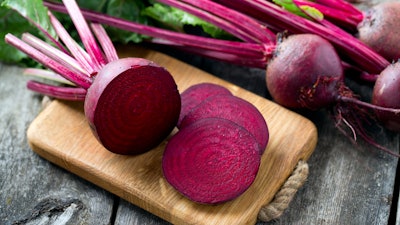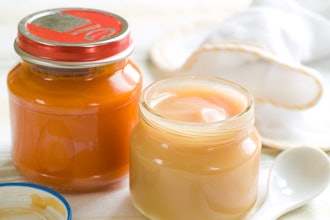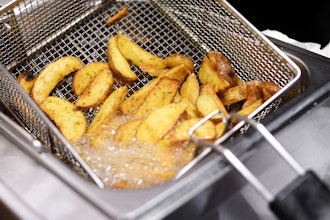
Meet the beet. Fans of "The Office" may know it as the mainstay of Schrute Farms. Others may have casually tossed them into conversation, remarking that someone has turned "beet red" from embarrassment.
While the crimson-colored vegetable has deep roots in American culture and colloquialisms, it rarely seems to make it onto the plate where it belongs.
That's because people just don't understand the beet, said Catherine Champagne, a professor of dietary assessment and nutritional counseling at Louisiana State University's Pennington Biomedical Research Center in Baton Rouge.
"You look at a beet and think, 'What can it do for me?' They actually have more benefits than you would think," she said.
Beets, or beetroot, are low in calories and high in phytonutrients, healthy compounds produced by plants. That shouldn't be a surprise given the vegetable's hallmark deep red shade, Champagne said.
"The first thing that comes to mind when I look at a beet is the color," she said. "The more color a vegetable or fruit has, the more phytonutrients it has. There's a lot to be said for that color."
Appreciation of the beet's medicinal properties dates back to the ancient Romans, who used it to treat constipation, improve circulation, fight fevers and even considered it an aphrodisiac. But modern science has zeroed in on just what gives the beet its healing powers.
Beets are high in nitrates which research suggests improve cardiovascular health in several ways. Some studies show beetroot juice supplementation may lower blood pressure and increase blood flow. It increases oxygen uptake, lengthening the time it takes to become fatigued, which allows people to stay active longer.
Beets also contain antioxidants, compounds in foods that help repair DNA and maintain good cell health, and they have anti-inflammatory properties, reducing the risk for numerous chronic diseases. Because of this, the beet is gaining popularity as a nutritional approach in managing cardiovascular disease and cancer.
Beets are low in fat and high in fiber. Half a cup of boiled beets contains 0.15 grams of fat and 1.7 grams of fiber, according to the U.S. Department of Agriculture. They are rich in vitamins C, A and K, which contribute to good bone health, along with several other B vitamins, which may protect against dementia and memory loss by improving blood flow to the brain.
They also include high levels of folate (vitamin B9), important for healthy cell growth and red blood cell formation. A half-cup serving of boiled beets has 68 micrograms of folate, which provides 17% of the daily value of the vitamin. "That's significant when you're talking about just one food," Champagne said.
But just how do you eat this hard lump of red roots?
Most studies on the health benefits of beets are based on drinking its juice, but beets also can be beneficial when consumed raw, in salads, boiled, baked, turned into chips or eaten dried. Beets can be pickled so they can be enjoyed year-round. Like the roots, the leaves can be eaten and contain high levels of vitamins A, K, C and E.
Champagne said she likes to roast beets in olive oil and spices, blend them into dips with yogurt and garlic or use them to brighten up coleslaw. She also boils them with onions and then chills them. "It's a refreshing taste."






















